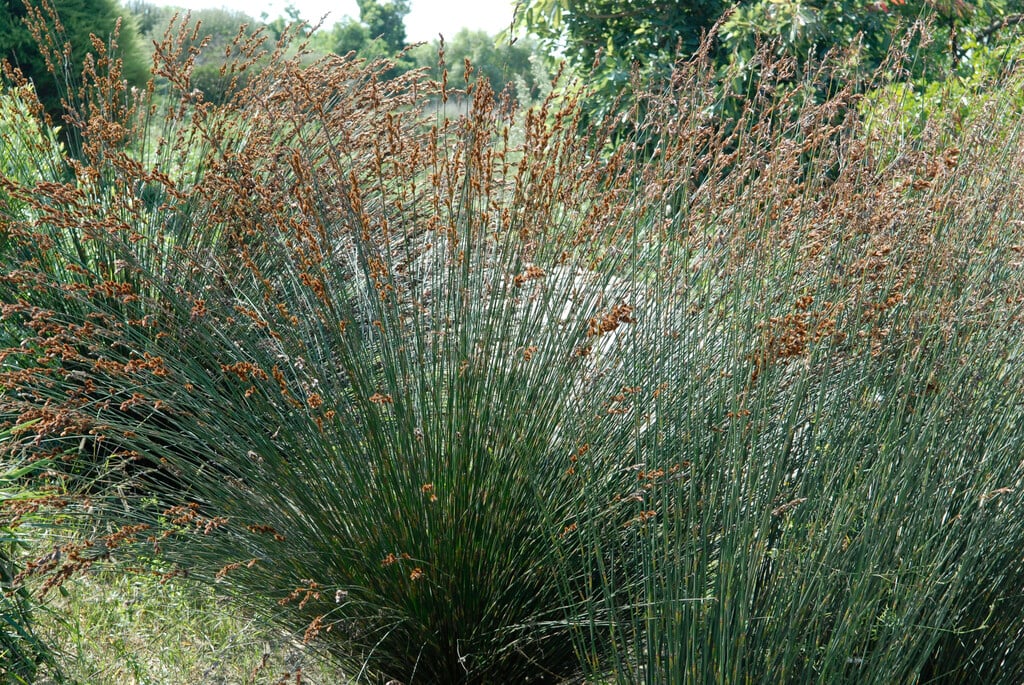Thamnochortus insignis
Tufted, evergreen perennial about 1.5m tall, with unbranched, smooth, dark green canes (culms) growing from vigorous rhizomes. Upright, grassy, mid-brown female spikelets and pendent mid-brown spikelets, in flowerheads, the florets 2-3mm wide and long, are produced in midsummer on separate plants
Size
Ultimate height
1–1.5 metresTime to ultimate height
2–5 yearsUltimate spread
1.5–2.5 metresGrowing conditions
Moisture
Well–drainedpH
AcidColour & scent
| Stem | Flower | Foliage | Fruit | |
| Spring | Green | |||
|---|---|---|---|---|
| Summer | Green | Brown | ||
| Autumn | Green | |||
| Winter | Green |
Position
- Full sun
Aspect
South–facing or West–facing
Exposure
Sheltered Hardiness
H3Botanical details
- Family
- Restionaceae
- Native to GB / Ireland
- No
- Foliage
- Evergreen
- Habit
- Tufted
- Name status
Correct
- Plant range
- S Africa (Cape)
How to grow
Cultivation
Grow in well-drained acid soil in sun, tolerant of alkaline soils and salt or sand laden winds. Suited to growing in warmer, frost free areas. May be too wide-spreading for greenhouse cultivation
Propagation
Propagate by division of rhizomes in spring
Suggested planting locations and garden types
- Coastal
- Sub-tropical
- Conservatory and greenhouse
Pruning
No pruning required
Pests
Generally pest-free but may be susceptible to glasshouse whitefly and red spider mite if grown under glass
Diseases
Generally disease-free
Love gardening
Sign up to receive regular gardening tips, inspiration, offers and more
View our Privacy Policy
Get involved
The Royal Horticultural Society is the UK’s leading gardening charity. We aim to enrich everyone’s life through plants, and make the UK a greener and more beautiful place.

